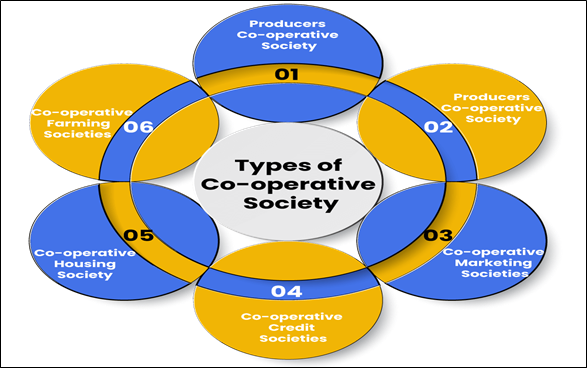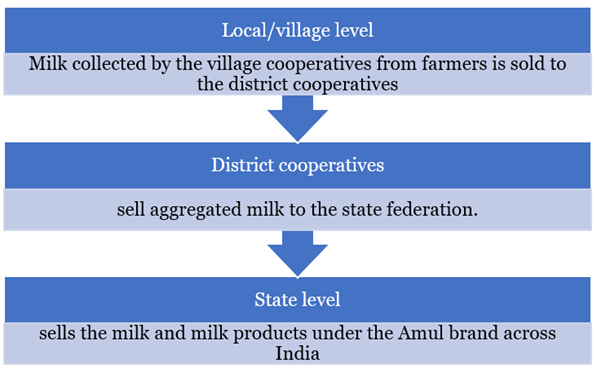Mains: GS2 – Governance | Constitution
Why in the news?
The International Day of Cooperatives was observed on July 5th, which highlights the role of cooperatives in promoting the welfare of people worldwide.
What are cooperative societies?

What is historical background of cooperatives societies in India?
|
Constitutional provisions for Co-operative Societies |
|
Article 19(1) (c), Article 43B, part IX B were added by 97th constitutional amendment act.
How did modern cooperative movement evolved in India?
India’s first cooperative society was established at Tirur in Tiruvallur district of Tamil Nadu.
|
The success story of Amul |
|

Dr. Verghese Kurien is the Father of White Revolution in India.
How cooperative societies help rural economies in India?
With over 8,00,000 cooperative societies categorised in 29 different sectors, India has the highest number of cooperative societies in the world.
What are the measures taken in India?
What lies ahead?
References